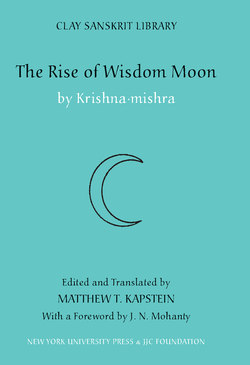Читать книгу The Rise of Wisdom Moon - Krishna mishra - Страница 30
На сайте Литреса книга снята с продажи.
ОглавлениеINTRODUCTION
varman “acquired fame by crushing with his strong arm the haughty Laksmikarna, whose armies had destroyed many princes.” (Hultzsch 1888: 219–20). And in other sources the Chedi monarch Lakshmi·karna—Karna in our play—is mentioned as “death to the lord of Kalanjara,”3 referring to his conquest of the Chandella’s chief fortress. Given the chronological knowledge derived from the broader study of medieval Indian epigraphy, “The Rise of Wisdom Moon” could now be understood to celebrate a Chandella restoration that occurred sometime not long after 1060.4
The Chandella dynasty had emerged from among feudatories of the Pratiharas who ruled in late first-millennium Western India, and they established themselves as the independent lords of much of what is today Madhya Pradesh by about the middle of the tenth century. Like many other royal families in India, their true beginnings, which were perhaps tribal, were disguised by a legend of divine origin, in this case stemming from the god of the moon, Chandra. This association was used to explain their name, Chandella, and is mentioned early in the first act of our play, where we find a reference to Kirti·varman as belonging to the “lunar line” (1.16). The title of the play and the name of its character Wisdom Moon further celebrate this connection.
Kingship in India was always a rough and tumble business, and the Chandellas, as was typical, were locked in shifting patterns of rivalries and alliances with their neighbors, including their former masters, the Pratiharas, as well as the Kala·churis who ruled in Chedi to the south, and the Palas and Senas to the east, in Bihar and Bengal, together with many less prominent players. The Chandellas ________
xxviii
